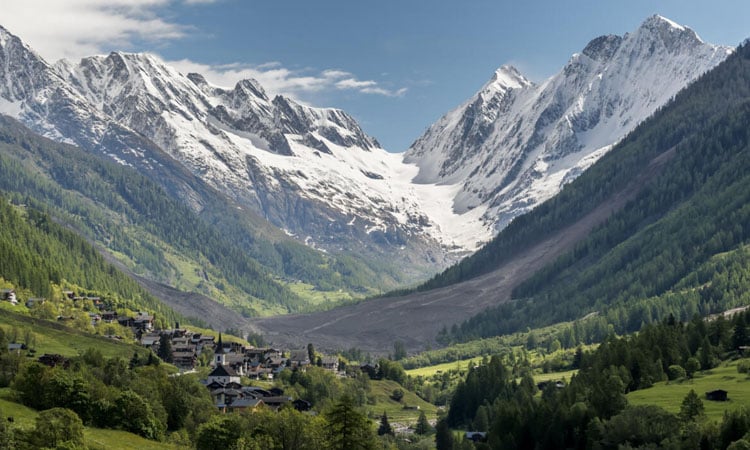News Flash
News Flash

GENEVA, May 29, 2025 (BSS/AFP) - Swiss authorities were on Thursday monitoring for possible flood risk in a southern valley, following a massive glacier collapse that created a huge pile of debris after destroying a small village.
On Wednesday the Birch glacier in Switzerland's southern Wallis region collapsed, sending tons of rock, ice and scree hurtling down the mountain slope and into the valley below.
The barrage largely destroyed the hamlet of Blatten, which had been home to 300 people and was evacuated last week due to the impending danger.
One person, a man aged 64, believed in the affected zone at the time, remained reported missing.
On Thursday authorities said they were monitoring the situation, as the pile of debris, stretching some two kilometres (1.25 miles), had blocked the river Lonza.
"There is a serious risk of an ice jam that could flood the valley below," Antoine Jacquod, a military security official, told the Keystone-ATS news agency.
"We're going to try to assess its dimensions today," added Jacquod.
As a precaution, 16 people were evacuated late Wednesday from two villages located downstream from the disaster area.
"It's like a mountain, and of course, it creates a small lake that gets bigger and bigger," explained Raphael Mayoraz, the cantonal official in charge of natural hazard management, Wednesday evening.
An artificial dam was preemptively emptied to receive the water pushed back by the wall of ice, earth and rubble.
Were that water to overflow from the dam, authorities would need to consider evacuating the valley.
- 'Not very stable' -
The Valais cantonal government has meanwhile asked the army to provide clearing equipment and pumps to secure the riverbed.
"The deposit ... is not very stable, and debris flow is possible within the deposit itself (which) makes any intervention in the disaster area impossible for the time being," cantonal authorities stated, adding there was risk on both sides of the valley.
YouTube footage of the collapse showed a huge cloud of ice and rubble hurtling down the mountainside, into the valley and partially up the mountain slope on the other side.
The force was such that Swiss monitoring stations registered the phenomenon as a seismic event.
According to Mayoraz, "three million cubic metres of rock fell suddenly onto the glacier, carrying it with them" down into the valley.
Swiss glaciers, severely impacted by climate change, melted as much in 2022 and 2023 as between 1960 and 1990, losing in total about 10 percent of their volume.